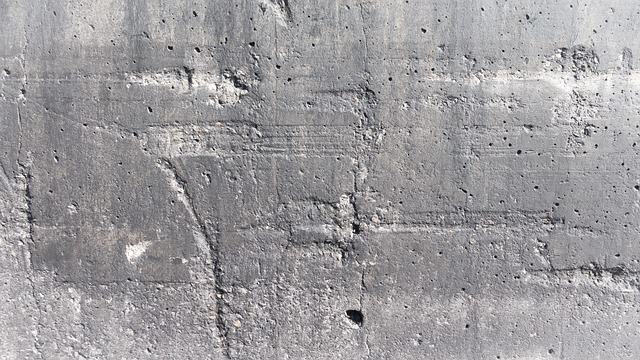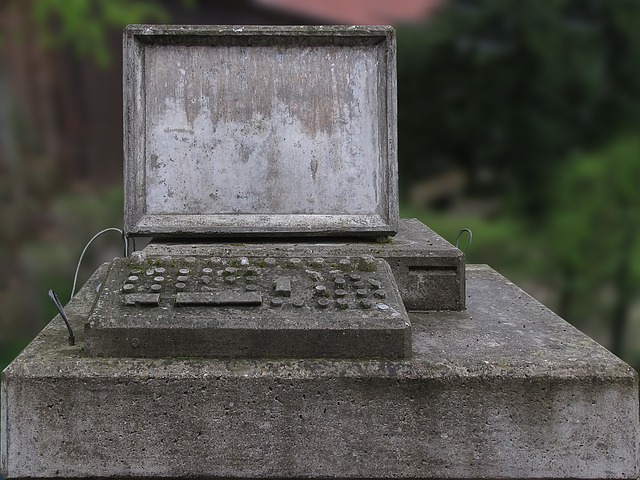Concrete foundation repairs are essential for maintaining home structures. Damage from weather, soil movement, and water intrusion can be prevented through early detection of issues like cracks and uneven surfaces. Effective repair methods include structural patching, epoxy injection, underpinning, and replacement, with choices based on severity, budget, and stability goals. Regular maintenance, such as protective sealers and moisture control, prevents costly failures and ensures long-term concrete health. DIY concrete repair for minor issues is cost-effective, while complex problems require professional services. Advanced technologies offer efficient, eco-friendly solutions. Sustainable practices prioritize environmental impact, enhancing structural durability. Regular inspections and prompt addressing of damage are crucial for maintaining concrete structures' integrity. DIY methods restore surfaces, ensuring structural soundness and aesthetics without exceeding budgets.
“Uncover affordable solutions for your concrete foundation repairs with our comprehensive guide. We explore the intricate world of concrete repair, empowering homeowners to recognize common signs of damage and understand various cost-effective methods. From DIY projects to advanced technologies, this article navigates the landscape of concrete restoration. Discover environmental considerations, long-term maintenance tips, and real-life success stories, all while exploring the art of repairing and revitalizing your home’s foundation.”
Understanding Concrete Foundation Repairs: A Comprehensive Guide

Concrete foundation repairs are a critical aspect of maintaining a sturdy and durable home structure. It’s essential to understand that concrete, while robust, is susceptible to damage over time due to various environmental factors like extreme weather conditions, soil movement, and water intrusion. These issues can lead to cracks, heaves, or settlement in the foundation, requiring prompt attention.
A comprehensive guide to concrete repair involves first identifying the specific problem areas through visual inspection or professional assessments. Once identified, there are several effective solutions, including structural patching, epoxy injection for controlled cracking, or more extensive methods like underpinning and foundation replacement. Choosing the right repair method depends on the severity of damage, budget considerations, and long-term stability goals. Regular maintenance and early intervention can prevent costly foundation failures, ensuring your home’s structural integrity for years to come.
Common Signs of Damaged Concrete Foundations

Concrete foundations, being the backbone of any structure, are susceptible to damage over time due to various environmental factors. Recognizing the signs of distress early on is crucial for effective concrete repair. Some common indicators include cracks in the surface, which can range from hairline fractures to larger, more visible splits. These cracks often appear as vertical or horizontal lines and may be uneven or follow a specific pattern. Heave or settling of the concrete is another sign; this occurs when parts of the foundation lift or sink due to ground movement, causing noticeable gaps or bulges.
Moreover, water damage can lead to significant problems, visible through stains, peeling, or blistered areas on the foundation’s surface. Water penetration may result from improper drainage, cracked joints, or inadequate waterproofing. Bulging or bending of the concrete walls is a severe sign and could indicate structural compromise. Prompt attention to these issues is essential to prevent further deterioration, ensuring the longevity and stability of the structure.
Types of Affordable Repair Methods for Homeowners

When it comes to affordable foundation repairs, there are several methods homeowners can consider for various concrete repair needs. One of the most common and cost-effective solutions is addressing cracks in the foundation. Crack repair can be as simple as using a concrete sealer to prevent further damage or, for more extensive cracks, injecting epoxy to fill and stabilize them. This not only improves the structural integrity but also prevents water penetration, which can cause further deterioration.
Another affordable option is mudjacking, a process where a mixture of cement, sand, and water is pumped into voids beneath the concrete surface to raise and stabilize sinking or uneven floors. For smaller issues like uneven tiles or slight settlement, self-leveling compound can be applied to create a smooth, even surface. These DIY-friendly methods are not only budget-friendly but also allow homeowners to take control of their repairs, ensuring a lasting solution for their property’s foundation health.
DIY vs. Professional Foundation Repair: Which is Right for You?

When it comes to repairing your foundation, there are two main options: DIY or professional concrete repair services. Choosing between the two depends on various factors, including your budget, time availability, and the extent of the damage. For minor cracks or surface-level issues, many homeowners opt for a DIY approach, which can be cost-effective and empowering. There are numerous online tutorials and resources available to guide you through the process, offering step-by-step instructions on fixing cracks, filling holes, and restoring your foundation’s integrity.
However, professional concrete repair experts offer undeniable advantages for more complex or severe foundation problems. Their expertise lies in diagnosing the root cause of the issue, ensuring long-lasting solutions. From structural repairs to underpinning and slab jacking, professionals have access to advanced tools and techniques tailored to different scenarios. While it might be tempting to save costs by doing it yourself, professional services provide peace of mind, guaranteeing a job well done and preventing further damage down the line, which is crucial for maintaining your home’s value and structural integrity in the long term.
Cost-Effective Solutions for Minor Cracks and Damage

Minor cracks and damage in concrete structures can be addressed with cost-effective solutions, ensuring longevity and aesthetics. For tiny cracks, a simple yet effective method is to use epoxy injections. This technique involves injecting a mixture of resin and hardener into the crack, which then cures to fill and strengthen it, preventing further damage. It’s an affordable option for small repairs and can be easily self-managed.
Another practical approach for concrete repair is to apply a skim coat over damaged areas. Skim coating involves spreading a thin layer of concrete mix to even out surfaces and cover imperfections. This method is ideal for repairing minor chips, holes, or uneven surfaces, instantly enhancing the curb appeal of your property without breaking the bank.
Advanced Technologies in Concrete Repair: The Modern Approach

In the realm of concrete repair, advanced technologies have revolutionized the way we address structural issues. Modern methods go beyond traditional techniques, offering efficient and cost-effective solutions for foundation repairs. One notable approach is the integration of innovative materials and equipment, such as polymer-modified concrete and specialized machinery capable of precise repairs. These advancements ensure minimal disruption to the surrounding area, making the process faster and more environmentally friendly.
Additionally, digital technologies play a pivotal role in enhancing repair accuracy. Laser scanning and 3D imaging are employed to create detailed maps of damaged structures, enabling technicians to plan repairs with unprecedented precision. This modern approach to concrete repair not only guarantees structural integrity but also offers long-lasting solutions, making it an ideal choice for affordable foundation repairs.
Environmental Considerations in Foundation Restoration

When undertaking foundation repairs, it’s crucial to consider the environmental impact of the chosen methods. For concrete repair, using eco-friendly materials and techniques can significantly reduce the carbon footprint of the restoration process. For example, opting for sustainable concrete mixes that incorporate recycled content not only minimizes waste but also lowers energy consumption during production. Additionally, utilizing advanced repair technologies, such as chemical injection or micro-surfacing, can extend the lifespan of the foundation without generating harmful byproducts.
These environmentally conscious approaches are not just beneficial for the planet; they also contribute to the overall durability and longevity of the structure. By prioritizing sustainable practices in concrete repair, homeowners and contractors can ensure that the foundation repairs are effective while preserving the ecological balance surrounding the building.
Long-Term Maintenance Tips for Healthy Concrete Structures

To ensure long-term health and stability of concrete structures, regular maintenance is key. Regular inspection is crucial to identify any signs of damage or potential issues early on. Promptly addressing cracks, chips, or bulges can prevent them from escalating into more costly repairs. A simple yet effective practice is to sweep and clean the surface regularly to remove debris, salt, and other contaminants that may weaken the concrete over time.
Additionally, applying a protective sealer once a year can safeguard against moisture penetration, which is a primary cause of concrete deterioration. Moisture control is essential, especially in regions with high humidity or frequent rainfall. Using dehumidifiers or ensuring proper drainage around the structure also contributes to maintaining its integrity. These proactive measures complement any concrete repair work done, ensuring the longevity and structural soundness of buildings and foundations.
Real-Life Success Stories: Affordable Repairs Pay Off

In the realm of home maintenance, there’s nothing quite as satisfying as tackling a project that not only improves your living space but also doesn’t break the bank. This is especially true for concrete repair, where even minor cracks or holes can escalate into costly issues if left unattended. Yet, countless homeowners have successfully taken on these fixes themselves, achieving remarkable results with remarkably affordable materials and methods.
From a crumbling driveway restored to its former glory to a cracked basement wall securely patched up, real-life success stories of DIY concrete repair abounds. These tales not only inspire but also serve as living proof that investing time and effort into maintenance can yield significant savings. By choosing the right products – like hydraulic cement for filling cracks or lightweight aggregate for repairing larger voids – and following straightforward instructions, homeowners have achieved long-lasting solutions, ensuring their properties remain structurally sound and aesthetically pleasing without exceeding their budgets.
